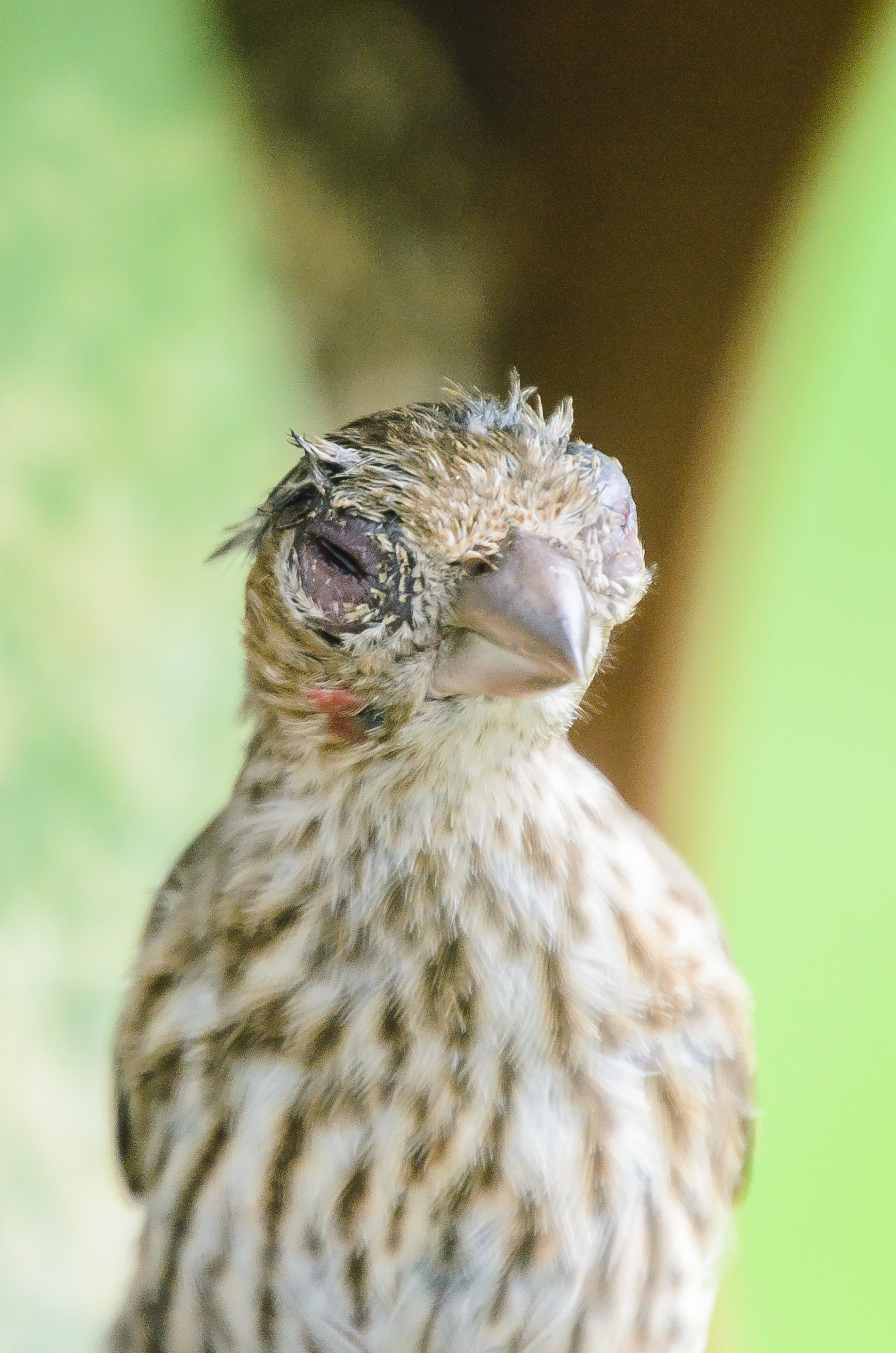Mycoplasmal conjunctivitis, also known as finch conjunctivitis, is caused by the bacterium Mycoplasma gallisepticum.
Mycoplasmal conjunctivitis was first documented in eastern house finches. The disease has been seen in other songbird species, including the American goldfinch, purple finch, pine grosbeak, and evening grosbeak.
Infected house finches and songbirds exhibit clinical signs like red, swollen eyelids and conjunctiva (the mucous membrane covering the surface of the eyeball and the inner surface of the eyelids) with clear ocular discharge. As the disease progresses, crusts may form along the edges of the eyelids. The eyes of severely affected birds may become swollen shut leading to blindness. These birds may be reluctant or unable to fly, resulting in death due to starvation, exposure, or predation.
Mycoplasmal conjunctivitis is transmitted via ocular discharge through direct contact with infected birds or contaminated surfaces, such as bird feeders.
Mycoplasmal conjunctivitis occurrence varies seasonally. In the northeast US, Mycoplasmal conjunctivitis is seen most often during the winter, whereas in the southeast, cases occur more frequently in the summer and early fall.
Diagnosis of Mycoplasmal conjunctivitis is made by the appearance of clinical signs and detection of M. gallisepticum DNA by PCR testing. Culture of M. gallisepticum from conjunctival swabs is difficult.
Although clinical signs of Mycoplasmal conjunctivitis can be treated with antibiotics, it is unclear if treated birds remain carriers of M. gallisepticum. Thus, recovered birds may continue to spread the disease.
To prevent or minimize transmission among songbirds, routine cleaning of bird feeders and avoiding feeders with large ports that birds can rub their heads against can help.
House finches were introduced to the eastern US from California in 1940 when a pet store owner released illegally held finches in New York. The birds reproduced and spread throughout the eastern US. Because the population started from a small number of birds, its lack of genetic diversity may make it more susceptible to new diseases, such as Mycoplasmal conjunctivitis.
Mycoplasma gallisepticum conjunctivitis was first seen in house finches in the mid-Atlantic states in the winter of 1994. Within a few years, it had spread throughout the eastern population of house finches. The disease was confirmed for the first time in western house finches in 2002 in Montana and then in 2004 in Oregon.
Another species, M. sturni, has been documented as the cause of conjunctivitis in European starlings, blue jays, and northern mockingbirds.
The disease also affects the American goldfinch, purple finch, pine grosbeak, and evening grosbeak. A blue jay was diagnosed with the infection after being held in a cage that previously housed infected house finches.
Another strain of M. gallisepticum is an important pathogen of domestic poultry and causes chronic respiratory disease in chickens and infectious sinusitis in turkeys. Although rare in free-ranging wild turkeys, clinical signs of infectious sinusitis, such as periocular swelling, sneezing, open-mouth breathing, have been seen in groups of wild turkeys enclosed in pens.
Mycoplasmal conjunctivitis signs include swelling and inflammation of the eyelids and conjunctiva and watery discharge from the eyes. Nasal discharge may also occur. Crusts form around the eyes and nares as discharge dries. Corneal ulcerations may also occur. The eyes of severely affected birds may become swollen shut leading to blindness. These birds may be reluctant or unable to fly and suffer from weight loss. Mortality rates are high among infected songbirds, resulting from starvation, exposure, or predation.
Mycoplasmal conjunctivitis is transmitted through direct contact with infected birds and through contact with surfaces contaminated with ocular discharges. Common sites of transmission are roosts and bird feeders where large numbers of birds are in close contact with each other. Tube-style bird feeders may facilitate transmission; feeder openings provide a surface on which infected birds may rub their eyes. Susceptible birds feeding from that opening can then become infected.
The disease has become endemic in the eastern US and is associated with periodic seasonal outbreaks according to numbers of susceptible birds and environmental stressors. In the northeast US, Mycoplasmal conjunctivitis is seen most often during the winter, whereas in the southeast, cases occur more frequently in the summer and early fall.
Clinical signs of M. gallisepticum infection can be treated with oral and ophthalmic antibiotics, but songbirds may remain infected after treatment. Thus, treatment and rehabilitation of birds with Mycoplasmal conjunctivitis and subsequent release into the wild may potentially result in further spread. In addition, there is a risk of releasing birds with antibiotic-resistant strains of M. gallisepticum.
Use of bird feeders should be stopped for at least two weeks if an outbreak of Mycoplasmal conjunctivitis occurs. Limiting exposure to infected birds in rehabilitation centers is also important. Humans and non-avian pets are not susceptible to Mycoplasmal conjunctivitis.



